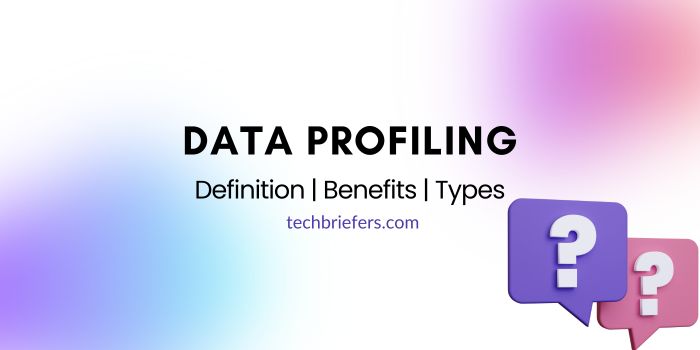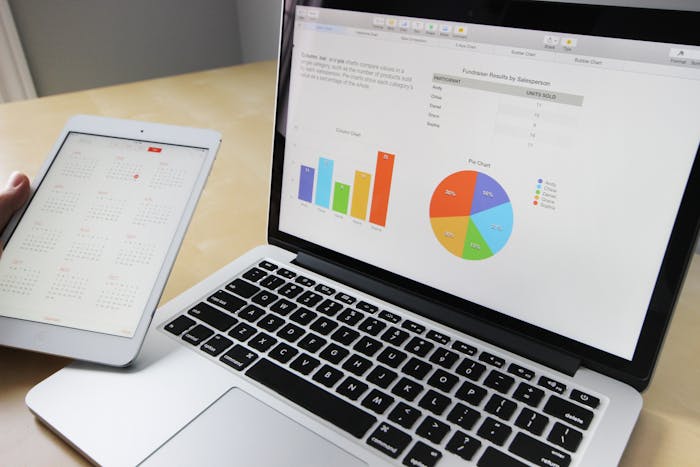What is Data Profiling? Benefits and Types

Data has become a treasure trove for companies. By optimizing data, companies can move forward in decision-making, improve operational efficiency, and provide added value to customers. Here, I will let you know “What is Data Profiling?“
However, to optimize the potential of data, a solid foundation is needed, namely high-quality and reliable data. This is where the important role of data profiling lies, as the key to unlocking the gate to maximum data benefits. This article will dive deeper into the answer to “What is Data Profiling?”. Starting from the definition, and benefits, to the types that are commonly used.
Also Read: 10 Different types of servers and their functions
What is Data Profiling?
Data profiling is like a microscope lens that helps us see data in more detail. This process involves in-depth analysis to understand the structure, content, relationships, and quality of data, ensuring that the data collected is accurate, consistent, and ready for analysis.
Like a data detective, data profiling uses techniques such as statistical analysis, data structure mapping, and anomaly identification to uncover hidden patterns, trends, and issues in data. Data profiling helps organizations better understand their data, including basic statistics, patterns, and potential issues. With data profiling, organizations can unlock the full potential of their data and make smarter decisions to achieve business goals.
Also Read: Server Cluster: Advantages, Types, and How They Work
Benefits of Data Profiling
Data profiling has several significant benefits in data management and analysis. Some of the key benefits include:
Better Data Understanding by Data Profiling
Data profiling helps organizations analyze their data in depth, including basic statistics, patterns, and potential issues. This allows organizations to make more informed decisions and improve operational efficiency.
Bad Data Filtering
Data profiling is useful for identifying invalid, duplicate, or incomplete data, which can reduce data quality. If we do this, we can remove inaccurate data, improving the data quality.
Anomaly Detection
Data profile analysis can identify anomalies in data that could potentially indicate hidden problems or opportunities. This capability allows for early handling of problems before they grow larger and simultaneously improves the business’s understanding of its data.
Business Process Optimization
Understanding data holistically enables organizations to improve their workflows. Through the process of data profiling, relationships between data elements can be identified and optimized, resulting in more efficient operations.
Improving Data Quality by Using Data Profiling
Data profiling improves data quality through validation, identification of invalid data, and removal of incomplete data. This process enables more appropriate use of data and supports better business decision-making.
Helps Decision Making
Data profiling helps organizations make better decisions by providing deeper insights into their data. This enables more effective use of data and improves business insights.
Improving Operational Efficiency
Data profiling is a double-edged sword that helps organizations achieve higher operational efficiency and profitability. By optimizing business processes and cutting operational costs, organizations can become more effective machines and generate more abundant profits.
Identifying Potential Problems
Profiling data helps organizations identify potential issues before they become more serious. This allows issues to be addressed early and improves business insights.
Increasing Business Awareness
Data profiling increases business awareness by providing deeper insights into data. This enables organizations to make better decisions and increase profitability.
Improving Data Quality
Data profiling plays a role in improving data quality by validating, identifying invalid data, and removing incomplete data. This process ensures that the data used is more accurate, thus supporting better business decision-making.
Also Read: Web Servers: How it Works, Functions, and Examples
Types of Profiling Data

Here are several types of profiling data that you need to know
Structure Discovery
Data Structure Discovery is a method for analyzing data and finding hidden patterns, relationships, and hierarchies within it. These structures help us understand data better and uncover new insights. This process utilizes various techniques such as statistics, machine learning, and other technologies to find relevant and useful structures in data management, analysis, and integration.
Content Discovery
Content discovery is a data analysis method that aims to understand and identify the content contained therein. This technique utilizes various techniques, such as statistical analysis, machine learning, and other technologies, to uncover hidden patterns, relationships, and structures in the data. The main benefit of content discovery is to help understand the quality of the data and identify the various problems contained therein.
Relationship Discovery
Finding relationships between pieces of data, such as key relationships between tables in a database or references between cells in a spreadsheet, is known as relationship discovery. This process is data analysis that aims to identify relationships between datasets or between columns within a dataset. MySQL is a very good database to learn for beginners.
In this process, statistical analysis, machine learning, and other technologies are used to find hidden patterns and relationships in data. Relationship discovery helps understand how different pieces of data relate to each other and have specific connections.
Example of Data Profiling Application
Most companies are overwhelmed with the data they have, so they don’t use it well. It can help them better manage and analyze their data, resulting in more valuable insights.
One example is Retail stores. By using data profiling to compare their sales data with inventory records, the retail store identified discrepancies between the digital system’s figures and the actual stock. Data profiling also helped them analyze purchase histories, revealing patterns in product sales.
Closing
By holistically understanding the structure, content, relationships, and quality of data, organizations can explore a world of new insights and opportunities. The benefits of data profiling go beyond the list above. In the right hands, data profiling can be a transformative tool that empowers organizations. With more accurate and reliable data, organizations can make smarter decisions, optimize business strategies, and outpace competitors.
Deeply understanding customers through data enables organizations to deliver more personalized and memorable experiences, increasing loyalty and driving business growth. Data profiling is a valuable investment for organizations looking to maximize the potential of their data.







Leave a Reply